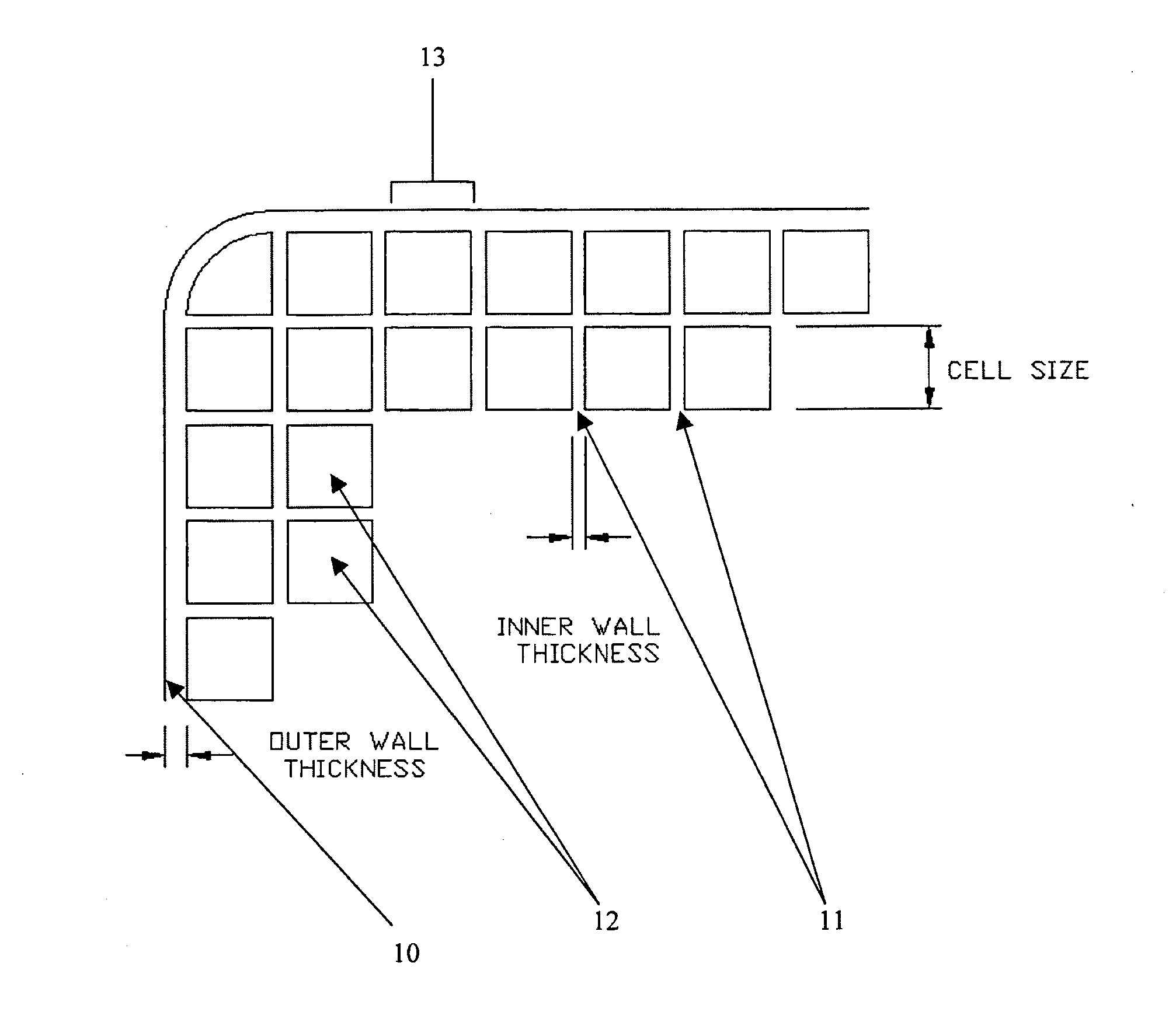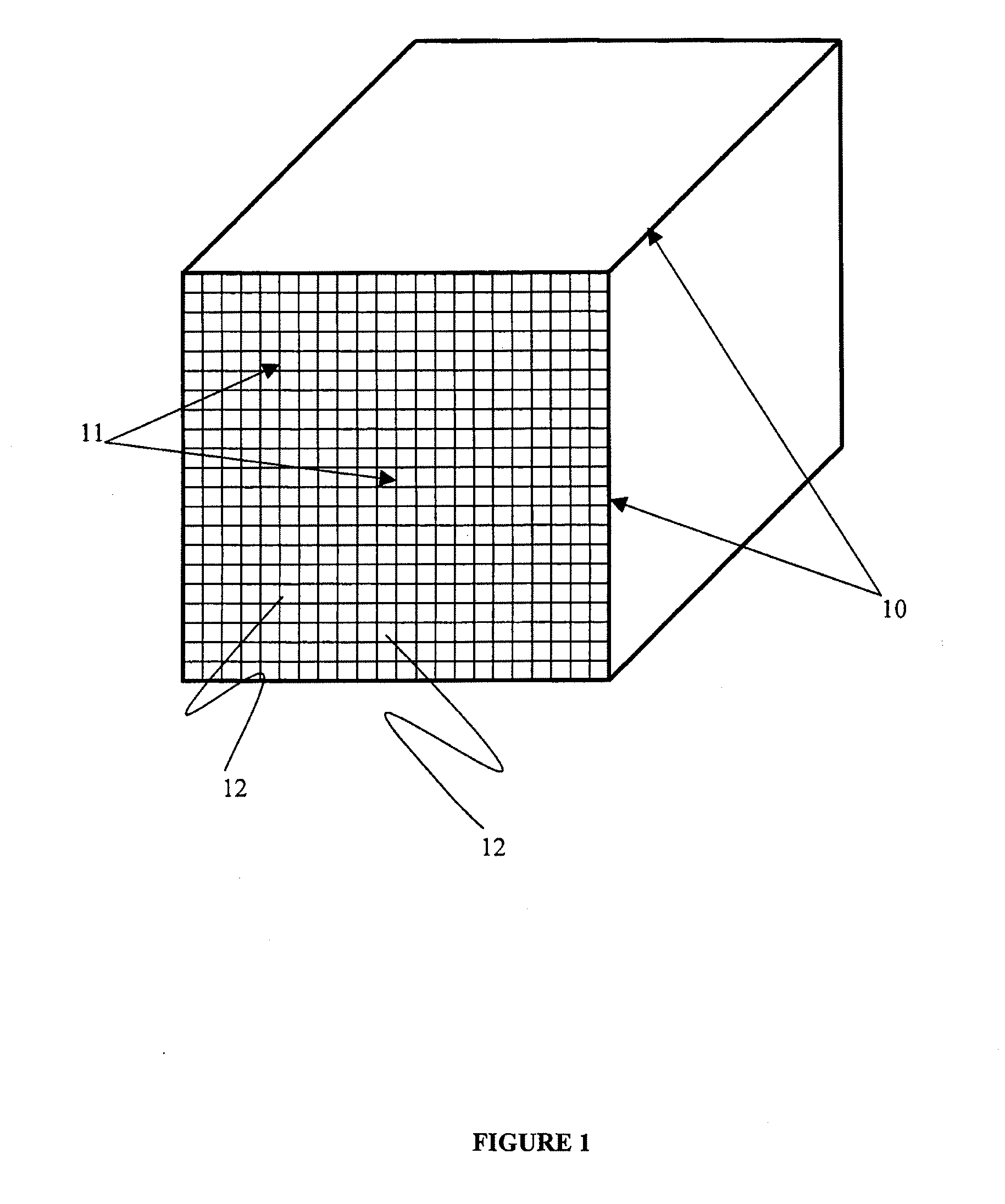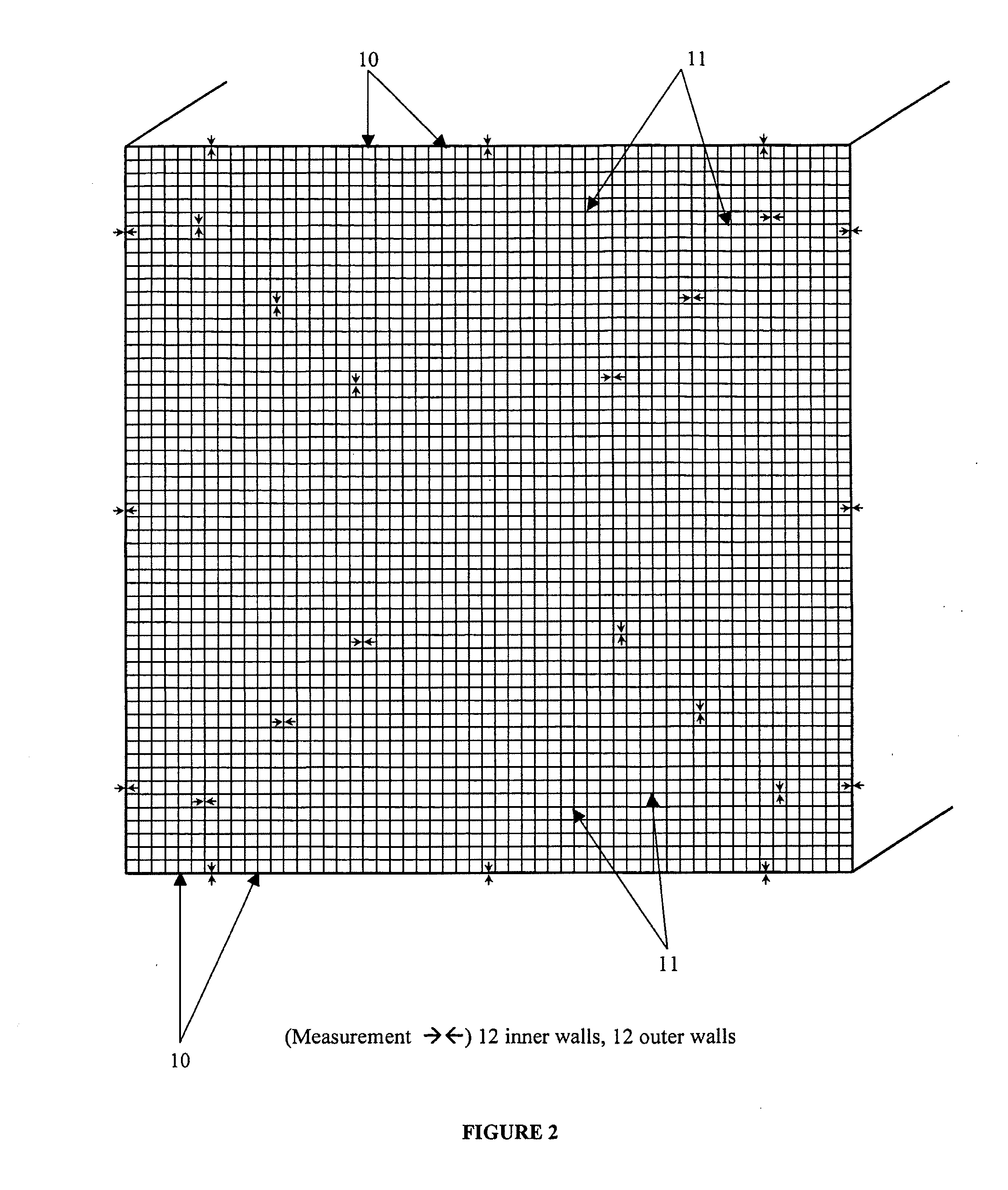Catalyst systems
a catalyst and composition technology, applied in the field of catalyst compositions, can solve the problems of underutilization of the entire catalytic activity potential of the catalyst composition, ineffective or efficient use of catalyst deep within the inner partition wall, and inability to achieve catalyst operation temperature more quickly, reduce thermal mass, and achieve the effect of reducing the number of nitrogen oxide denitration or selective catalytic reduction
- Summary
- Abstract
- Description
- Claims
- Application Information
AI Technical Summary
Benefits of technology
Problems solved by technology
Method used
Image
Examples
example 1
Prior Art
[0082]Example 1 describes a prior art honeycomb-like monolithic structural catalyst body. This example is provided to set forth a basis of comparison for the following examples of embodiments of the present invention.
[0083]The honeycomb-like monolithic structural catalyst body of Example 1 was produced by a generally utilized extrusion technique. The compositional parameters and physical properties of the catalytic body are summarized in Table 2. The catalytic body displayed a catalyst composition comprising 75.6% titania (TiO2), 8.9% tungsten trioxide (WO3), 3.4% vanadium pentoxide (V2O5), and 12.1% other components comprising SiO2, CaO, Al2O3, Fe2O3, SO4, and minor species.
[0084]The thickness of the inner partition walls of the catalyst body was 0.27 mm while the thickness of the outer peripheral wall was 0.65 mm, the walls being measured in accordance with the twelve (12) point method previously described. The flow channels enclosed by the inner partition walls and outer...
example 2
[0090]A honeycomb-like monolithic structural catalyst body of the present invention was prepared by extrusion according to the method of described herein for producing a structural catalyst body of the present invention wherein energy loss was minimized by the use of a lubricant and die clogging was minimized by the use of a screen as described herein. The compositional parameters and physical properties of the catalytic body are summarized in Table 3. The catalytic body displayed a catalyst composition comprising 78.3% titania (TiO2), 7.7% tungsten trioxide (WO3), 3.5% vanadium pentoxide (V2O5), and 10.5% other comprising SiO2, CaO, Al2O3, Fe2O3, SO4, and minor species.
[0091]The thickness of the inner partition walls of the catalyst body was 0.21 mm while the thickness of the outer peripheral wall was 0.57 mm, the walls being measured in accordance with the twelve (12) point method previously described. The flow channels enclosed by the inner partition walls in were nominally squar...
example 3
[0101]A honeycomb-like monolithic structural catalyst body of the present invention was prepared by extrusion according to the method of described herein for producing a structural catalyst body of the present invention wherein energy loss was minimized by the use of a lubricant and die clogging was minimized by the use of a screen as described herein. The compositional parameters and physical properties of the catalytic body are summarized in Table 4. The catalytic body displayed a catalyst composition comprising 72.6% titania (TiO2), 19.2% tungsten trioxide (WO3), 0% vanadium pentoxide (V2O5), and 8.2% other components comprising SiO2, CaO, Al2O3, Fe2O3, SO4, and minor species.
[0102]The thickness of the inner partition walls of the catalyst body was 0.20 mm while the thickness of the outer peripheral wall was 0.56 mm, the walls being measured in accordance with the twelve (12) point method previously described. The flow channels enclosed by the inner partition walls and outer peri...
PUM
| Property | Measurement | Unit |
|---|---|---|
| thickness | aaaaa | aaaaa |
| hydraulic diameter | aaaaa | aaaaa |
| thickness | aaaaa | aaaaa |
Abstract
Description
Claims
Application Information
 Login to View More
Login to View More - R&D
- Intellectual Property
- Life Sciences
- Materials
- Tech Scout
- Unparalleled Data Quality
- Higher Quality Content
- 60% Fewer Hallucinations
Browse by: Latest US Patents, China's latest patents, Technical Efficacy Thesaurus, Application Domain, Technology Topic, Popular Technical Reports.
© 2025 PatSnap. All rights reserved.Legal|Privacy policy|Modern Slavery Act Transparency Statement|Sitemap|About US| Contact US: help@patsnap.com



